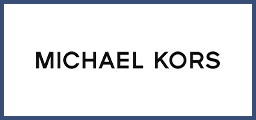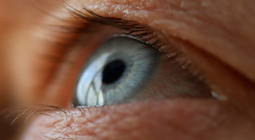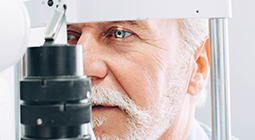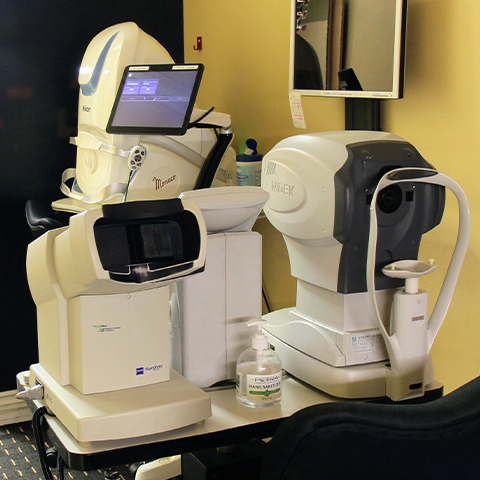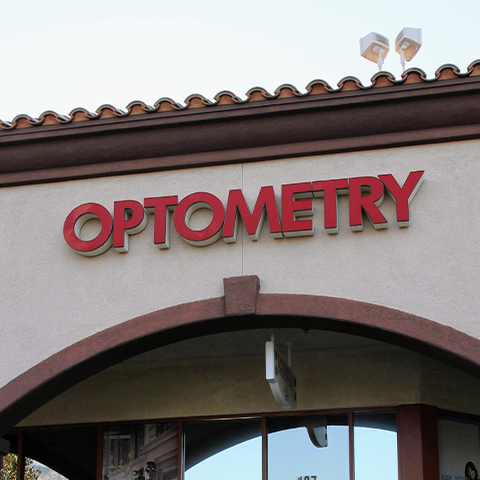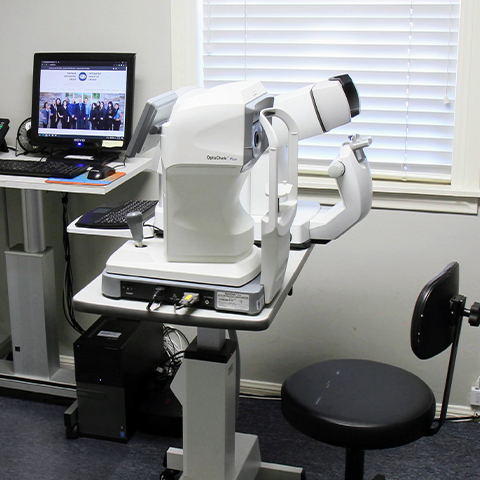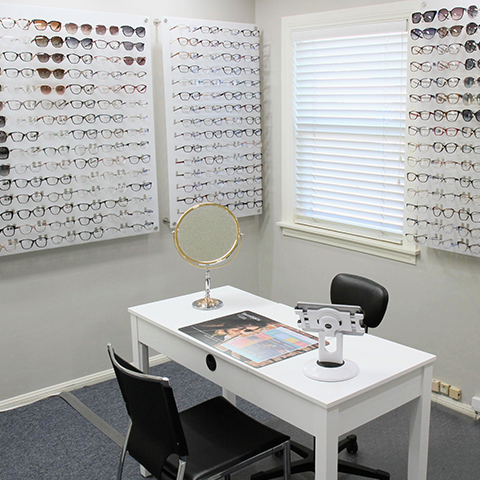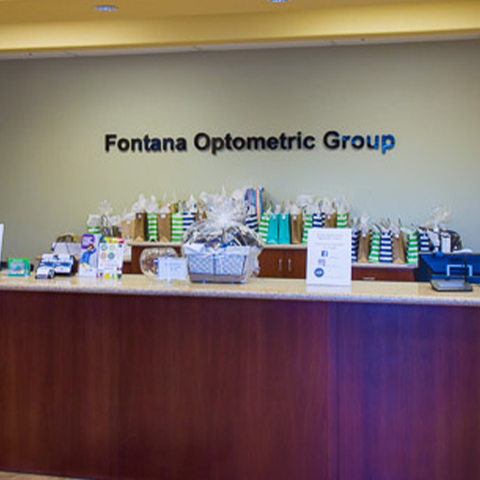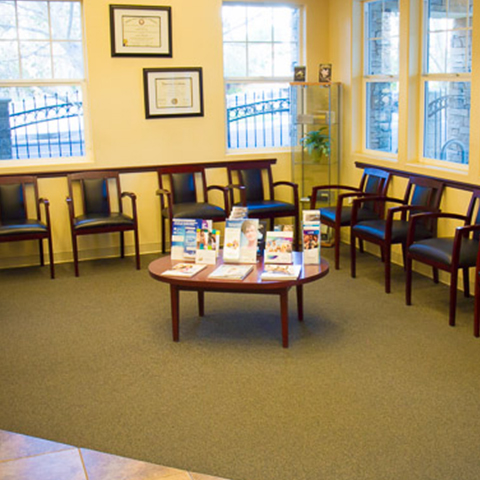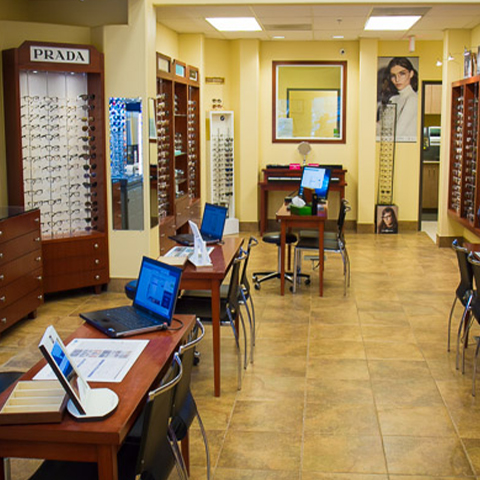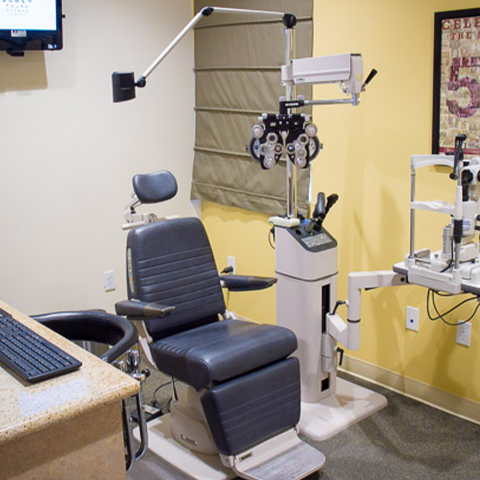There’s More to Vision than What You See
You might have clear vision, but do you know how healthy your eyes are?
Visiting the eye doctor for eye exams regularly is one of the most important steps you can take to maintain your eye health. Eye exams can provide early detection of potential issues before they become more serious problems.
By taking preventative measures like scheduling regular eye exams, you can help protect the well-being of your vision. So if you still need to book an appointment for a comprehensive eye exam, do so today!
Book Appointment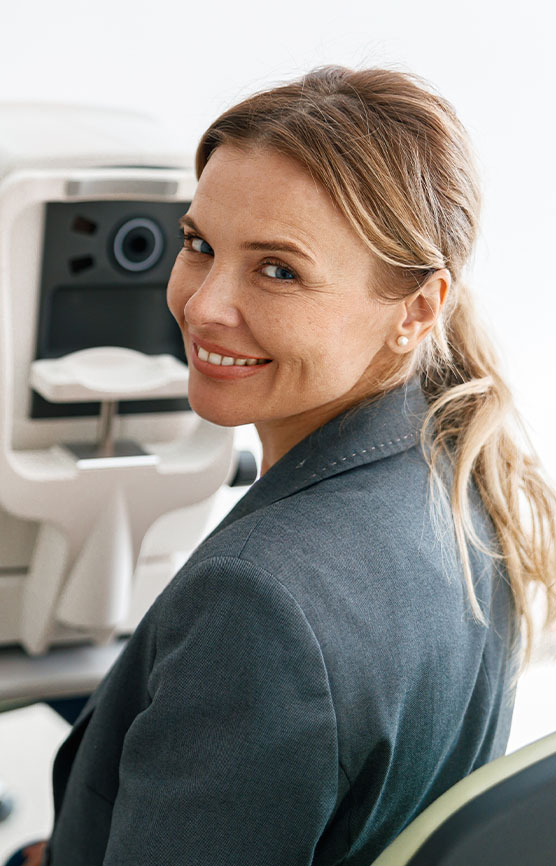
Why Eye Exams Are Important
Eye exams not only measure your prescription for eyeglasses and contact lenses but also provide an opportunity for us to look at your overall eye health.
We do this with the help of several types of eye care technology that can observe your eye’s internal structures. From the information they provide, we can develop a strategy to help preserve your eye health and vision.
Common Eye Diseases & Conditions
Though numerous eye diseases and conditions exist, some are more common than others. And your risk for developing an eye disease can vary depending on your age, family health history, and current health conditions.
During every eye exam, we take time to understand your unique health situation so we can personalize our approach to suit your needs.
Age-Related Macular Degeneration
Age-related macular degeneration, or AMD, is an eye disease many people can develop as they grow older.
This disease affects a part of your retina called the macula, which provides the crisp, clear vision you use to read, write, and recognize faces. AMD deteriorates the macula over time and can lead to permanent vision loss.
At Optometric Group we use tools like Optical Coherence Tomography (OCT) to capture detailed retinal images and you can use the Amsler Grid to check your vision at home . If you notice distortion, blurriness, or dark spots, schedule an eye exam promptly.
Glaucoma
Glaucoma is a group of eye diseases that affect a part of your eye called the optic nerve, which transfers images from your eyes to your brain to help you see.
The most common versions of glaucoma are often connected to high internal eye pressure, but glaucoma can also develop even when pressure levels are within normal ranges. Your risk of developing glaucoma can increase with age or if you have other conditions like myopia and diabetes.
Cataracts
Cataracts are among the most common eye conditions people can develop and are one of the most common causes of blindness around the globe.
Cataracts typically develop with age as the natural lens inside your eye becomes more stiff and rigid. As this happens, the lens can develop a hazy, milky appearance that can obstruct your vision and lead to blindness.
Keratoconus
Keratoconus is an eye condition when your cornea thins and bulges forward. When this happens, you can experience eye discomfort, visual problems like light sensitivity and glare, and difficulties wearing contact lenses.
Depending on your symptoms, we can address the issue by recommending specialty contact lenses or putting you in touch with an ophthalmologist.
Diabetes-Related Eye Disease
Diabetes is a common health condition that affects how your body processes sugar in your bloodstream. If your health is affected by diabetes, you may have a higher risk of developing diabetes-related eye diseases like diabetic retinopathy and diabetic macular edema.
Getting a diabetic eye exam is important for those who may be at risk of developing diabetes-related eye conditions.
Dry Eye Syndrome
You may be developing dry eye syndrome if you’re struggling with burning or stinging sensations, wateriness, or even light sensitivity.
Dry eye is among the most common eye conditions Americans can face, and we offer several strategies to help address and manage your symptoms.
Schedule an appointment to learn more about how we can meet your needs for dry eye therapy.
Preserving Your Eye Health
Every eye is unique, so we adjust our approach according to your needs. We can recommend medications to help preserve your eye health and vision, but we may refer you to an ophthalmologist in more serious cases.
Your eyes are also inextricably linked to your overall health. Keeping yourself healthy can help support your eye health and preserve your vision. Some ways you can do this include:
- Eating a balanced diet
- Exercising regularly
- Quitting smoking
- Getting regular eye exams
- Wearing sunglasses
Comprehensive Eye Care Technology
When we say “comprehensive,” we mean it.
With the help of modern eye care technology, we can observe your eye’s internal structures and look for potential eye diseases and conditions—sometimes before you even notice symptoms!
If we notice an issue with your eye health, we can develop a strategy to help manage the condition and preserve your vision.
Optical Coherence Tomography
Optical coherence tomography (OCT) is a cross-sectional imaging technique that helps us look at your retina and detect diseases like glaucoma, age-related macular degeneration, and diabetes-related eye diseases.
Think of OCT as an ultrasound scan, but instead of sound, the technology uses light to generate its images.
Visual Field Testing
Visual field testing is a technique we use to determine if there are areas of your vision where you might not see (also known as blind spots).
This technique is effective in helping us detect glaucoma, which typically affects your peripheral vision first.
No-Air-Puff Tonometry
Tonometry helps us measure your eye’s internal pressure levels, which can help determine your risk of developing glaucoma.
Our no-air-puff tonometry technique is a way to measure your eye’s internal pressure and screen for eye diseases without the discomfort that can be caused by an air puff test.
Corneal Topography
Corneal topography can help analyze your eye’s surface and look for abnormalities affecting your vision and eye comfort. We can use this technique to look for signs of keratoconus and dry eye, or to help fit you for contact lenses.
Retinal Imaging
Retinal imaging creates a detailed view of your retinal health with the help of precision imagery.
This technique can help us look for numerous eye diseases and conditions, including AMD, glaucoma, diabetes-related eye disease, and so much more.
Get Help Today
The teams at Optometric Group of Fontana, Optometric Group of Upland, & Optometric Group of Rancho Cucamonga are ready to help preserve and protect your vision. Start today by booking your appointment!
Book AppointmentOur Locations
Optometric Group of Fontana
Find us on the corner of Juniper Ave and Seville Ave. We offer plenty of parking right next to our building, with accessibility options available.
- 8381 Juniper Ave #100
- Fontana, CA 92335
Hours of Operation
- Monday: 9:00 AM – 6:00 PM
- Tuesday: 9:00 AM – 6:00 PM
- Wednesday: 9:00 AM – 6:00 PM
- Thursday: 9:00 AM – 6:00 PM
- Friday: 9:00 AM – 6:00 PM
- Saturday: 9:00 AM – 2:00 PM
- Sunday: Closed
*Closed 12:00PM – 1:30PM for lunch
Optometric Group of Rancho Cucamonga
Find us in the Vineyards Marketplace right off the Foothill Freeway. Take the exit onto Milliken Ave and turn left onto Kenyon Way. We offer plenty of parking out front.
- 11460 Kenyon Way #107
- Rancho Cucamonga, CA 91701
Hours of Operation
- Monday: 9:00 AM – 6:00 PM
- Tuesday: 9:00 AM – 6:00 PM
- Wednesday: Closed
- Thursday: 9:00 AM – 6:00 PM
- Friday: 9:00 AM – 6:00 PM
- Saturday: By Appointment Only
- Sunday: Closed
*Closed 12:00 PM – 2:00 PM for lunch.
Optometric Group of Upland Downtown
Find us on N. 2nd Ave between E. 9th St. and E. A St. just south of the Gazebo in beautiful downtown Upland. You can park on 2nd Ave in front of the office, or we have a parking lot behind our building for your convenience.
- 155 N 2nd Ave
- Upland, CA 91786
Hours of Operation
- Monday: 8:30 AM – 5:30 PM
- Tuesday: 8:30 AM – 5:30 PM
- Wednesday: 8:30 AM – 5:30 PM
- Thursday: 8:30 AM – 5:30 AM
- Friday: 8:30 AM – 5:30 PM
- Saturday : Closed
- Sunday: Closed
*Closed 12:00 PM – 2:00 PM for lunch.
Our Brands

